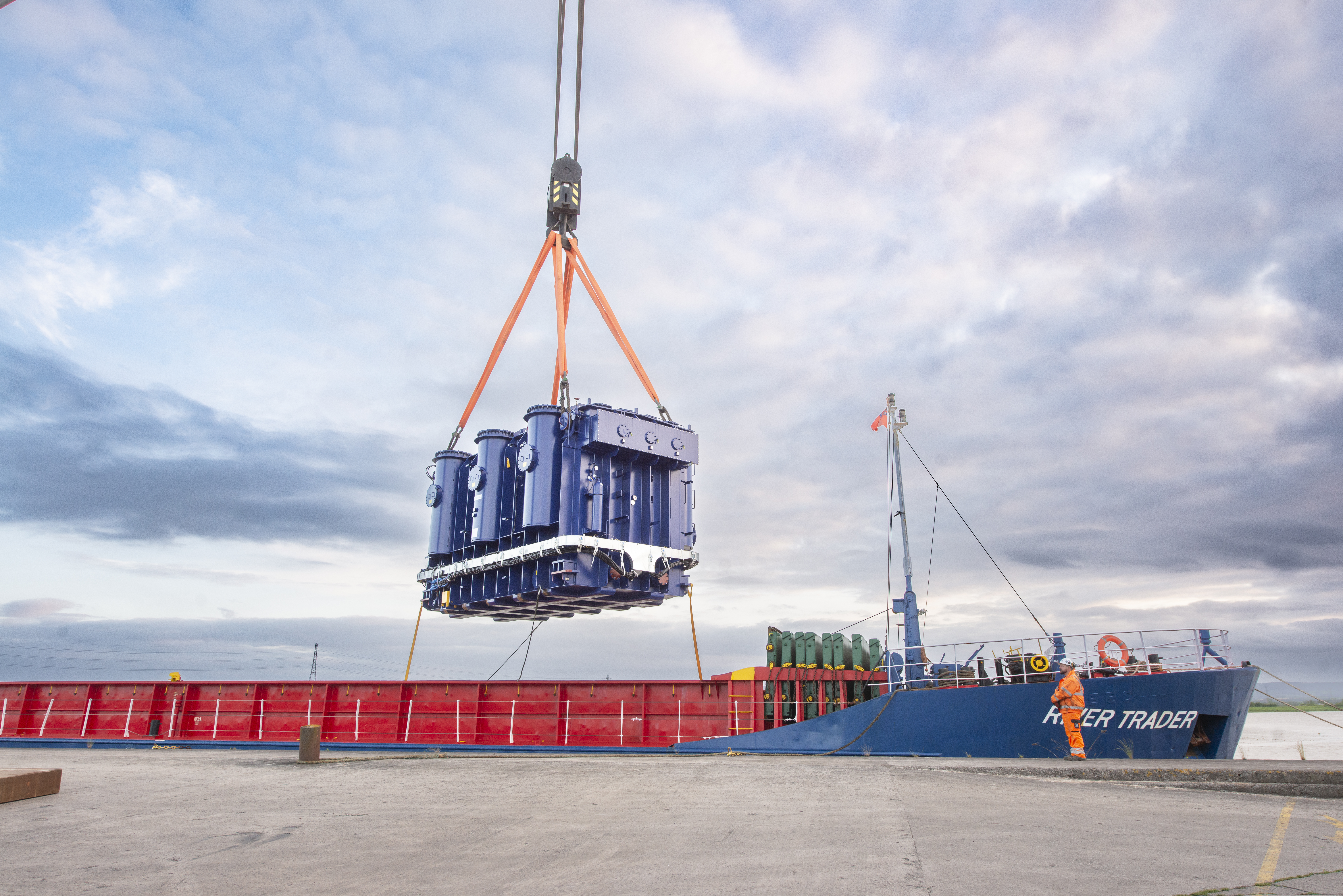
Second 174-tonne transformer makes journey from Dunball Wharf to Bridgwater substation
From Rotterdam via the River Parrett, a 174-tonne supergrid transformer has made its final journey to Bridgwater substation as part of a high voltage electricity network upgrade in the area.
All great things come in pairs and this super grid transformer is now installed alongside a similar one delivered last July. Its connection onto the electricity transmission network is an important part of the ongoing Hinkley Connection Project.
The modifications support the upgrading of the existing Hinkley to Bridgwater overhead electricity line, which a short section of new 400kV T-pylons joins into to complete a high voltage connection east to Melksham substation.
The substation is being upgraded from 275kV to 400kV, thereby futureproofing the reinforcement as electricity demand grows in the region.
Arriving at Dunball Wharf, from Rotterdam, the transformer - measuring 8.8 metres in length and weighing the same as 30 African elephants - was offloaded at high tide. A large crane was used to lift the huge transformer onto its 58-metre long transport rig.
The transformer left Dunball Wharf on the morning of Sunday 28 May and travelled along Bristol Road towards Bridgwater. It then turned left onto Saint John’s Street and onto Westonzoyland Road before arriving at the substation. Due to the weight of the transformer, the transport lorry travelled at a reduced speed for safety reasons and the journey took a couple of hours to complete.
No road closures were required to facilitate the movement of the transformer. Traffic management was provided under police guidance and supervision.
Project Director of the Hinkley Connection Project, Steve Haskayne, said “We want to thank the local community for their patience while we transported the transformer onto its final location in Bridgwater.
“The new transformer supports the ongoing upgrade of the substation on the existing Hinkley to Bridgwater overhead electricity line. The upgrade will allow for greater energy security, with the substation expected to transfer more power, as future demand increases.”






